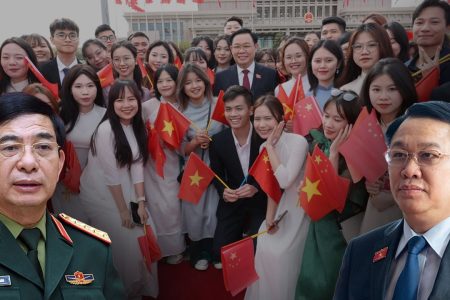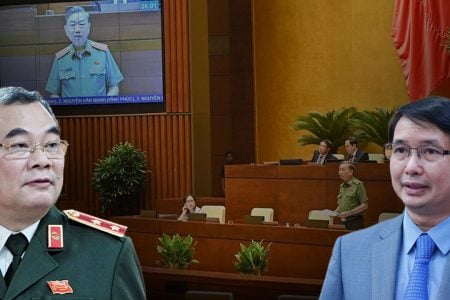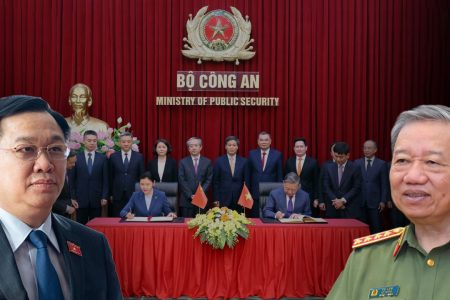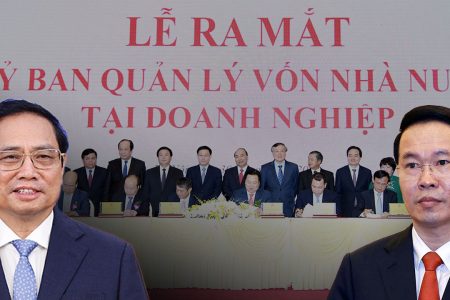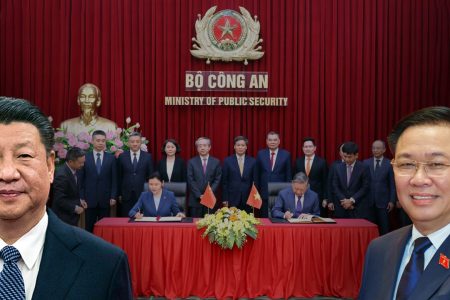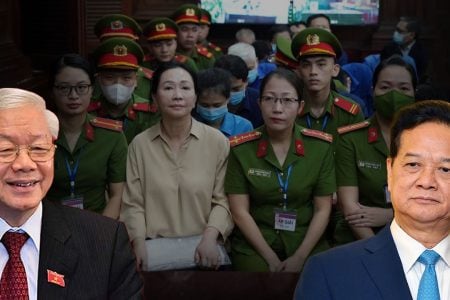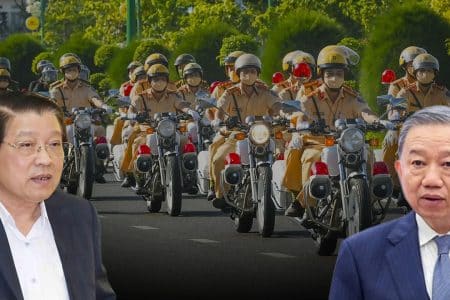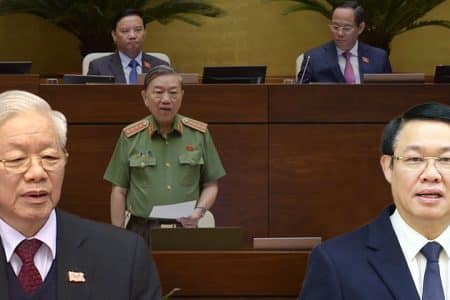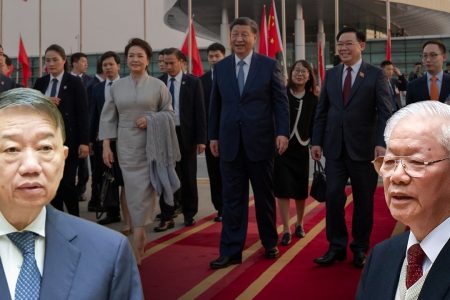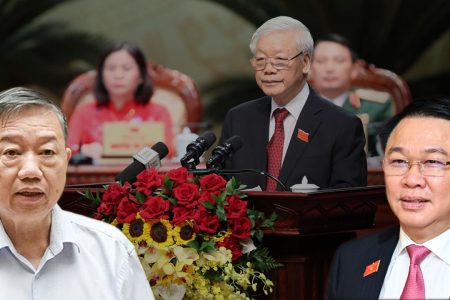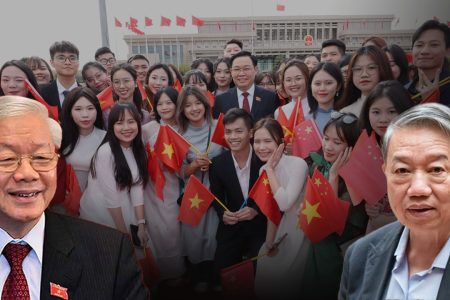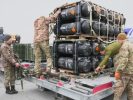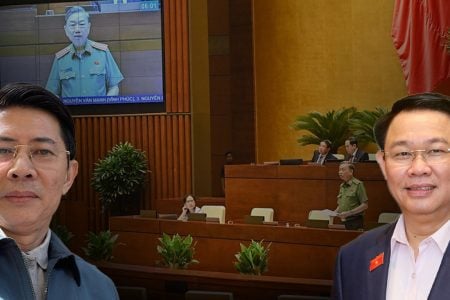
Vietnam – An important customer to buy weapons from Russia
The war in Ukraine has changed the world. With the encirclement, sanctions, and isolation of Russia with an unprecedented level of the US and the West, many countries are also affected, including Vietnam.
One of the areas where Vietnam is affected by Western sanctions and embargoes against Russia is the issue of weapons.
Russia is the world’s second-largest arms exporter, after the United States, accounting for about 20% of global arms sales. Between 2016 and 2020, Moscow sold $28 billion in weapons to 45 countries.
Vietnam is the Southeast Asian country that buys the most weapons from Russia. Between 1995 and 2019, Vietnam imported $7.38 billion worth of Russian weapons — accounting for 84% of the country’s total arms imports (approximately 5% of Russia’s total global defense exports). Over the past 20 years, 61% of Russia’s defense exports to Southeast Asia were sold to Vietnam.
Russia is the largest arms supplier to Vietnam and Southeast Asia. In 2018, Vietnam ordered a fleet of Russian-made fighters, surface ships, and submarines worth more than $1 billion, according to state news agency TASS.
Previously, Vietnam purchased six Kilo-class submarines worth more than $2 billion.
Vietnam is one of the most active arms importers in the world in recent years, especially in the context that China always threatens Vietnam in the South China Sea (Vietnam calls it the East Sea).
Vietnam ranks 23rd out of 137 countries and second in Southeast Asia after Indonesia in the US-based Global Firepower’s 2019 military strength rankings.
The assessment is based on 55 parameters, including military resources, a variety of weapon systems, natural resources, geographical features, and financial and human resources available.
Recently, Vietnam and Russia signed an agreement to expand cooperation in trade and military technology. The Vietnam-Russia intergovernmental agreement on military-technical cooperation was signed on December 1 in Moscow during talks between Russian Defense Minister Sergei Shoigu and his Vietnamese counterpart Phan Van Giang. The military and technological trade relationship between Vietnam and Russia has been strong since the 1990s.
The Russian Defense Ministry said the agreement was supported by a new plan for “future joint work” that would expand “military-technical cooperation” between the two countries.
In the past time, Russia has provided Vietnam with weapons including Kilo-class submarines, Gerard-class frigates, Tarantul-class corvettes, Svetlyak-class patrol boats, Sukhoi Su-class combat aircrafts 30MK2 and T-90S/SK main battle tanks.
Moscow’s most recent major contract has an agreement to supply Vietnam with 12 Yakovlev Yak-130 jet/light fighter trainers in 2019 for $350 million.

What does Vietnam do to get out of this difficult situation?
Following the outbreak of the Ukraine conflict, the North Atlantic Treaty Organization (NATO) imposed comprehensive sanctions on Russia aimed at crippling its ability to participate in the global economy. Among those measures, there is the isolation of Russia from the international payment system, including SWIFT – a mechanism to facilitate the transfer of money between countries.
Wide-ranging sanctions could have a serious impact on Vietnam, especially in terms of potentially affecting its ability to procure and maintain military hardware from Russia. These include primary weapons such as tanks, warships, fighters, and combat helicopters, and light weapons such as pistols and assault rifles (such as the new Kalashnikov AK-200 series).
Sanctions have had some notable impacts on Vietnam’s defense industry.
The first is that Russia can hardly meet the current military hardware orders.
The second is that repairing, maintaining, or overhauling existing Russian-made hardware is difficult, if not impossible. This stems from difficulties in providing essential spare parts, tools, and certifications. Experts from the relevant military equipment manufacturer, design, development, and production department will not be able to travel from Russia to Vietnam to provide support when needed.
Third, contractual obligations, including financial and performance obligations, can be difficult to secure. This means that neither Russia nor Vietnam can be held liable for the breach of contract, since it is force majeure, even if they so desire.
Faced with the growing threat from China to the waters and features that Vietnam is holding, Vietnam needs to ensure its defense power. However, most of Vietnam’s weapons are bought from Russia, which Russia is now embargoed and sanctioned, so it will lead to the gaps created by Russia being blocked from global trade that need to be filled by alternative suppliers. Vietnam will have to look for capable companies in the defense industry that can carry out maintenance, repair, and hardware overhaul activities for these weapons. Accordingly, Vietnam needs to find alternative sources of weapons supply and maintenance to Russia, of which India is a country that can perform these activities.
However, while India is great power in Asia, its weapons production technology is also heavily dependent on Russian engineering and technology. In the context of Russia’s isolation in the world, India will certainly be greatly affected by this weapons production.
Indonesia recently had to give up buying weapons from Russia, in order to access weapons from the West, also fearing that the embargo and sanctions against Russia would lead to disruption to the supply of weapons to Indonesia.
The US side has repeatedly offered its weapons to Vietnam, but because Vietnam is afraid of China, it has not yet promoted the US issue.
In the opinion of some military experts, because the threat from China is mainly in the East Sea, Vietnam needs to be equipped with weapons and equipment to improve its defense capabilities on the surface and underwater defense capabilities. Especially the means of reconnaissance or early warning, which is an advantage in US weapons, if the Vietnamese Navy has it, it will be much stronger in defense. In addition, if it is possible to use Sonar devices (undersea exploration) where the US side has the absolute advantage, the Vietnamese Navy can firmly grasp the terrain on the seabed, which will greatly help the deployment of defensive operations on the seabed. This is completely possible if both Vietnam – and the US sides agree to cooperate in this field.
However, there are still too many barriers for Vietnam to be able to purchase US weapons, equipment, and military means. Those barriers are the psychology and tradition of Vietnamese people in using weapons from Russia; the price of American weapons is much more expensive than Russian ones; The lack of trust from Vietnam in the US Government in general leads to fear when buying weapons from the US, because the Vietnamese Government may be afraid that buying weapons from the US will make this country dependent on America. In addition, the shyness before pressure from China is also a reason why Vietnam is still not ready to buy weapons from the US.
Translated by Thoibao.de from RFA: https://www.rfa.org/vietnamese/news/blog/what-difficulties-vn-facing-when-looking-into-buying-weapons-from-the-us-03312022100042.html




